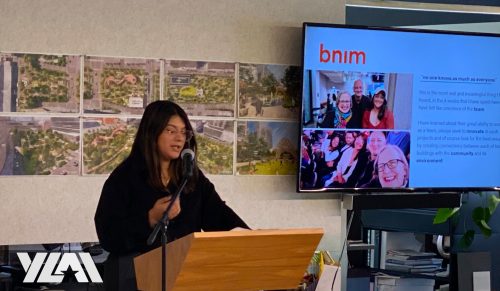Spotlight
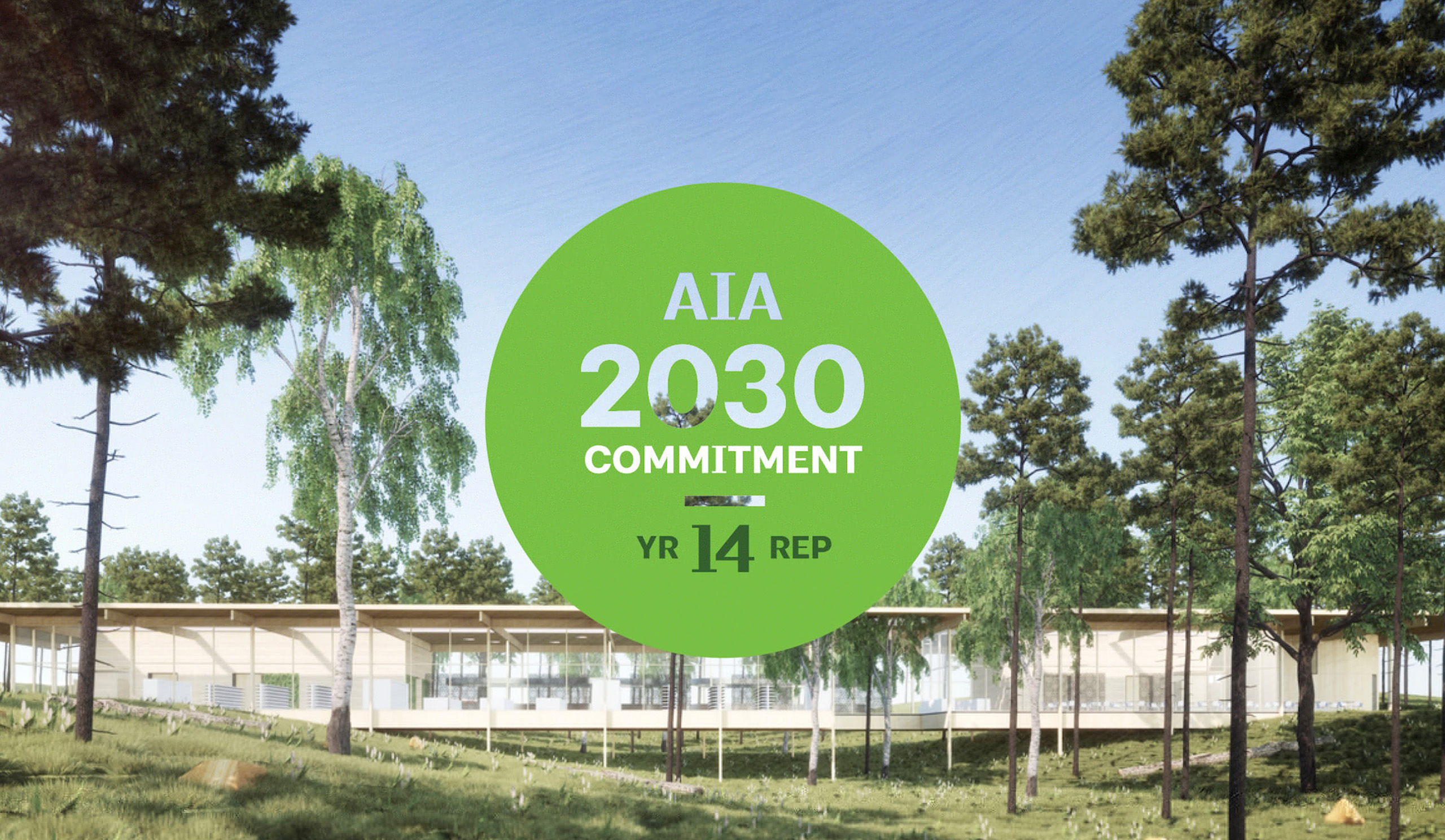
Progress on the Path to the 2030 Challenge
At BNIM, we rise to our commitment to sustainable and regenerative design, reducing lifecycle carbon, and driving equity throughout our practice. This commitment resulted in a breakthrough in measured impacts in our global portfolio of on-the-boards projects in 2023. The integrated and holistic design approach we strive to implement on every project yields high-performance buildings that minimize environmental impact while providing exceptional solutions for our clients, communities, and people who enjoy our places and spaces every day. Through another year of implementation of our sustainability action plan, we are reviewing and reflecting on our progress on the path to reach a net-zero energy portfolio of buildings by 2030. Below are some of BNIM’s key sustainability achievements this past year:
Achieving Energy Reduction Targets
The 2030 Challenge sets ambitious industry targets for reducing energy consumption from new buildings, with the goal of designing operationally carbon-neutral buildings by 2030, and embodied carbon-neutral buildings by 2040. In 2023, BNIM further refined our energy modeling capabilities and passive design strategies to meet these challenging benchmarks.
Our approach to energy focuses on optimizing the building size, shape, and envelope first; then focusing on high-efficiency heating, cooling, and lighting systems; and finally replacing the remaining energy demands with renewable energy either on-site or added to the local electrical grid. We also consider where a building is located relative to the daily users (transportation and access), how the site is activated to improve rainwater utilization and native ecology restoration, and exploring the opportunity to renovate rather than building new. By taking an integrated whole-building approach from the concept stage, we’re able to identify the most cost-effective energy conservation measures.
These practices helped achieve a net 90% reduction in energy from baseline across our 10 million gross square feet of reported 2023 portfolio.
Putting Plans Into Practice
Our sustainability approach guided every project across our portfolio of projects in 2023, including the notable project case studies below. These real-world examples demonstrate BNIM’s progressive and rigorous approach to environmentally responsible design, exemplifying urban, suburban, and rural net-zero projects with client motivations aligned with the triple bottom line: Economy, Ecology, and Equity.
Ecology — We are seeing more clients look to their central plants and energy systems as important solutions to building-level performance.
A to Z Naturals Nutrition Center is a rural net-zero project west of Atlanta, GA. Situated in a wooded area of a larger campus, this primarily timber and glass building bridges a natural ravine and incorporates openings to allow the forest canopy to remain intact. Through careful design of structure and envelope, the design eliminates nearly all concrete from the structure, save for a few footings and a lightweight topping slab – drastically reducing the emissions from the project materials and utilizing sequestered carbon in the timber components.
Energy use was driven down by 79% through iterative and coordinated modeling. Given the building’s integration within its forest context, putting solar directly on the building’s roof was not an option. While additional reductions were analyzed, the project achieved net zero using a new campus-scale solar array being developed by the client.
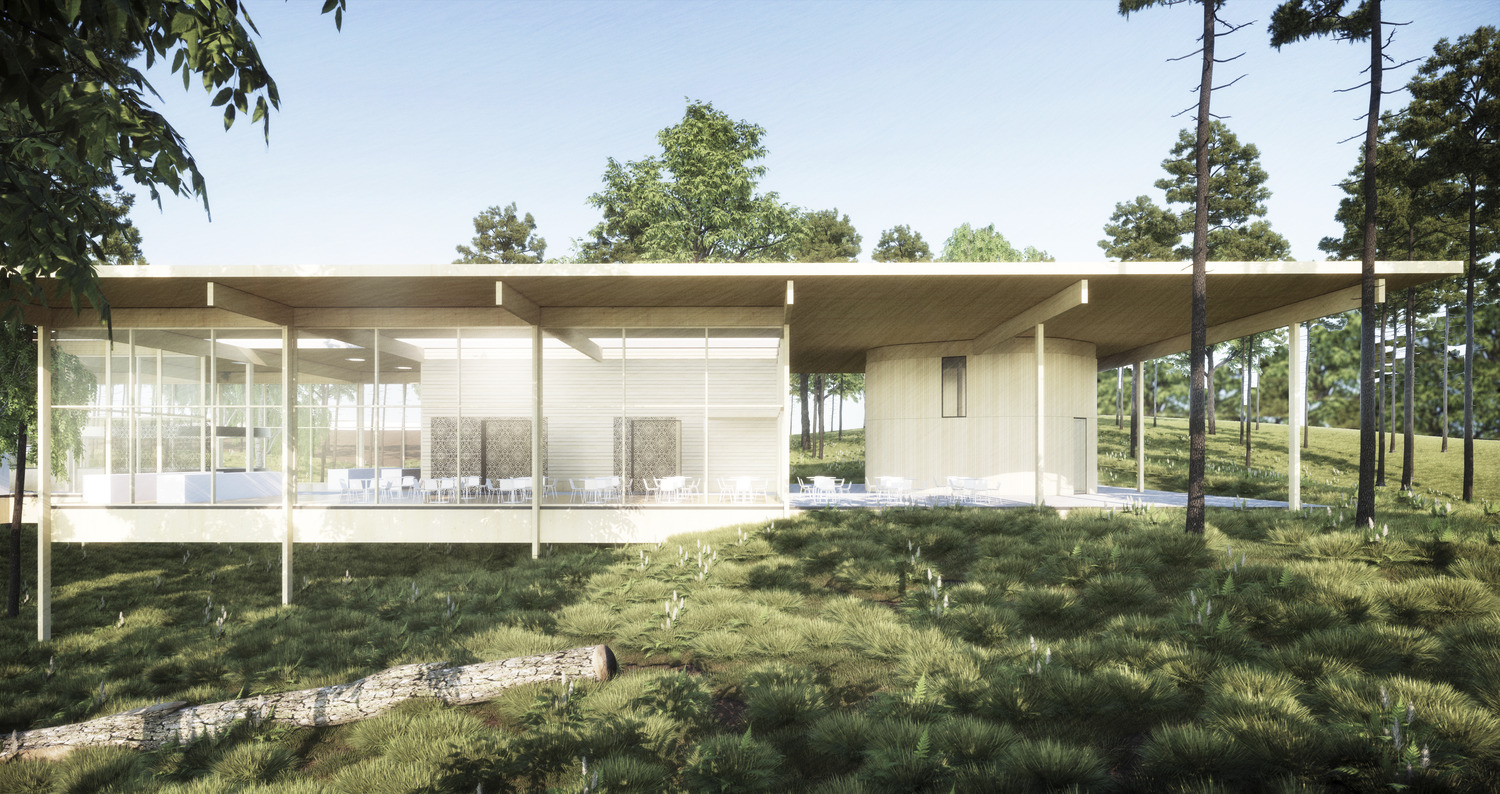
Equity — Sustainable design is fundamentally intersectional with equity – where a building is located, how it is perceived, and if it is loved impacts the opportunity for longevity as the client’s needs evolve.
BlaqOut HQ is the new headquarters for BlaqOut, a non-profit and movement organization working to improve healthcare access and create a safe space for Kansas City’s Black LGBTQ+ community.
Before the project started, this client challenged our staff with a critical question: how do you create space that feels welcoming and safe to those who are marginalized? Through engagement, deep listening and discussions about equity, belonging, comfort, and safety, we used biophilic principles of “refuge”, “prospect”, and “defensible space” to inform our design approach. At the boundary of the property, we use a solar canopy and planted green wall to identify a clear sense of arrival and threshold. Within the building we focused on adding daylight, living walls, and high-performance HVAC and lighting systems to create comfortable spaces surrounded by light and color.
As an emerging non-profit, the commitment to net-zero energy on site was inspired by a demand for long-term financial benefit by reducing or eliminating utility costs, as well as a desire to focus on resilience and self-sufficiency, so that BlaqOut can continue to serve their mission following a natural disaster or power outage.
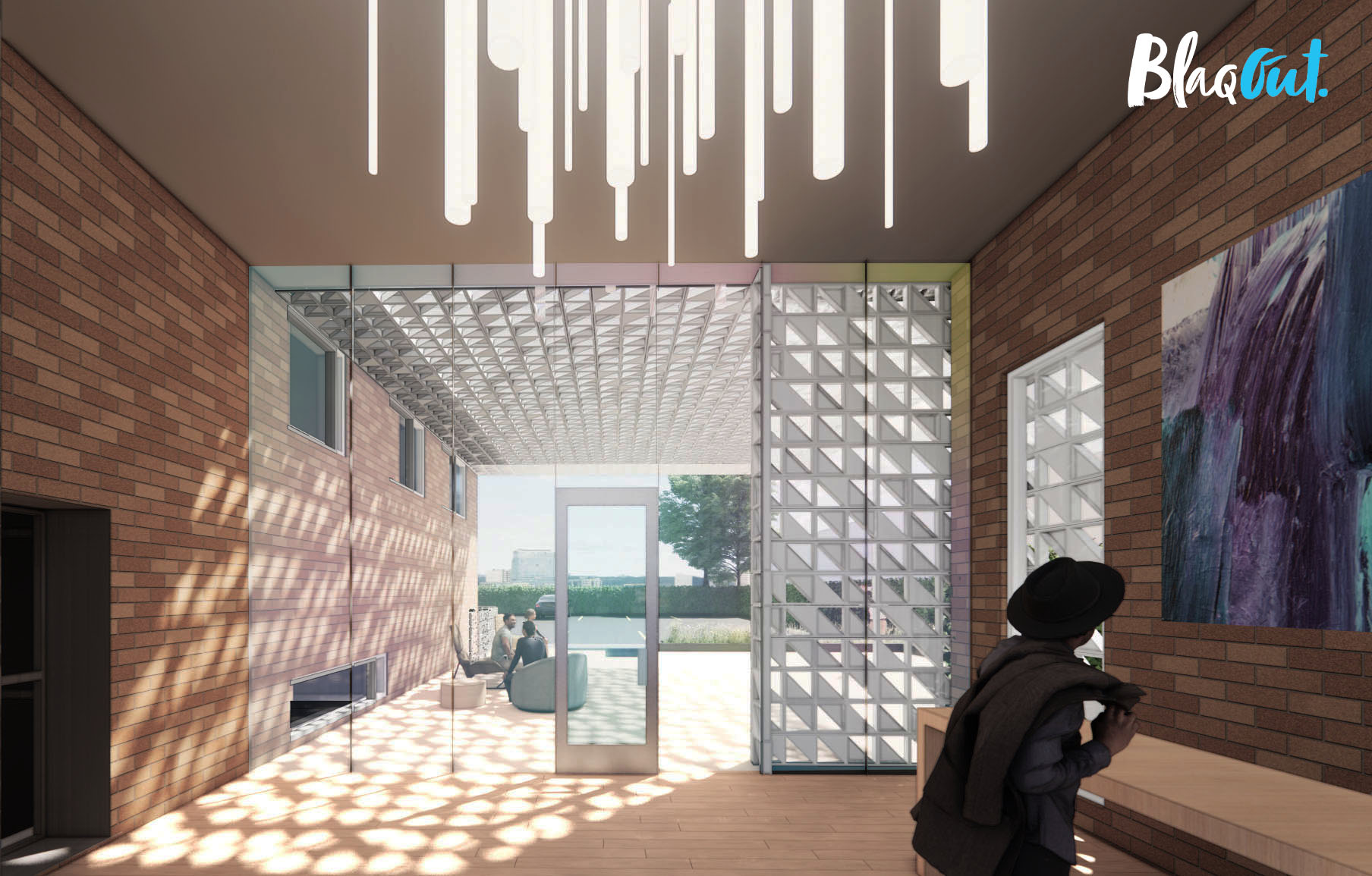
Economy — The words and metrics we use matter, and learning to engage with clients through the lens of their priorities can make the difference between a “business as usual” building and a regenerative, high-performance building.
Words such as “sustainability” and “climate change” may not resonate with every client we work with. It is important to refine our language and metrics to align with a client’s motivations and goals, while establishing an understanding that we all fundamentally want clean, safe, efficient, and healthy places to exist.
BNIM collaborated with a recent client on the reimagining and transformation of their corporate office and surface parking into a living campus with housing, restored ecology and native biome, green infrastructure to absorb rainwater on site, and passive-house certified homes and high-performance commercial buildings. Through this work, BNIM developed a robust cost-benefit matrix which compares multiple environmental impact scenarios such as “code minimum,” high performance (50% energy and water reduction), net zero energy and water, and a net-positive design approach.
Each scenario of the matrix includes a range of impacts on energy, water, health, first cost, and then adds federal, state, and local incentives, advanced depreciation, and other real-world financial mechanisms to demonstrate a 40-year life-cycle cost and net-present value of each scenario. Under almost all conditions, a net-zero or net-positive approach comes out substantially ahead for the client.
BNIM has continued to develop and refine this tool, which has already proved useful on two other large-scale planning projects. Using this method allows us to have a conversation about performance through the lens (and language) of money and economy, noting that performance is key to long-term savings, as well as political balancing needed to maximize available incentives.
Finding Funding for Sustainability Solutions
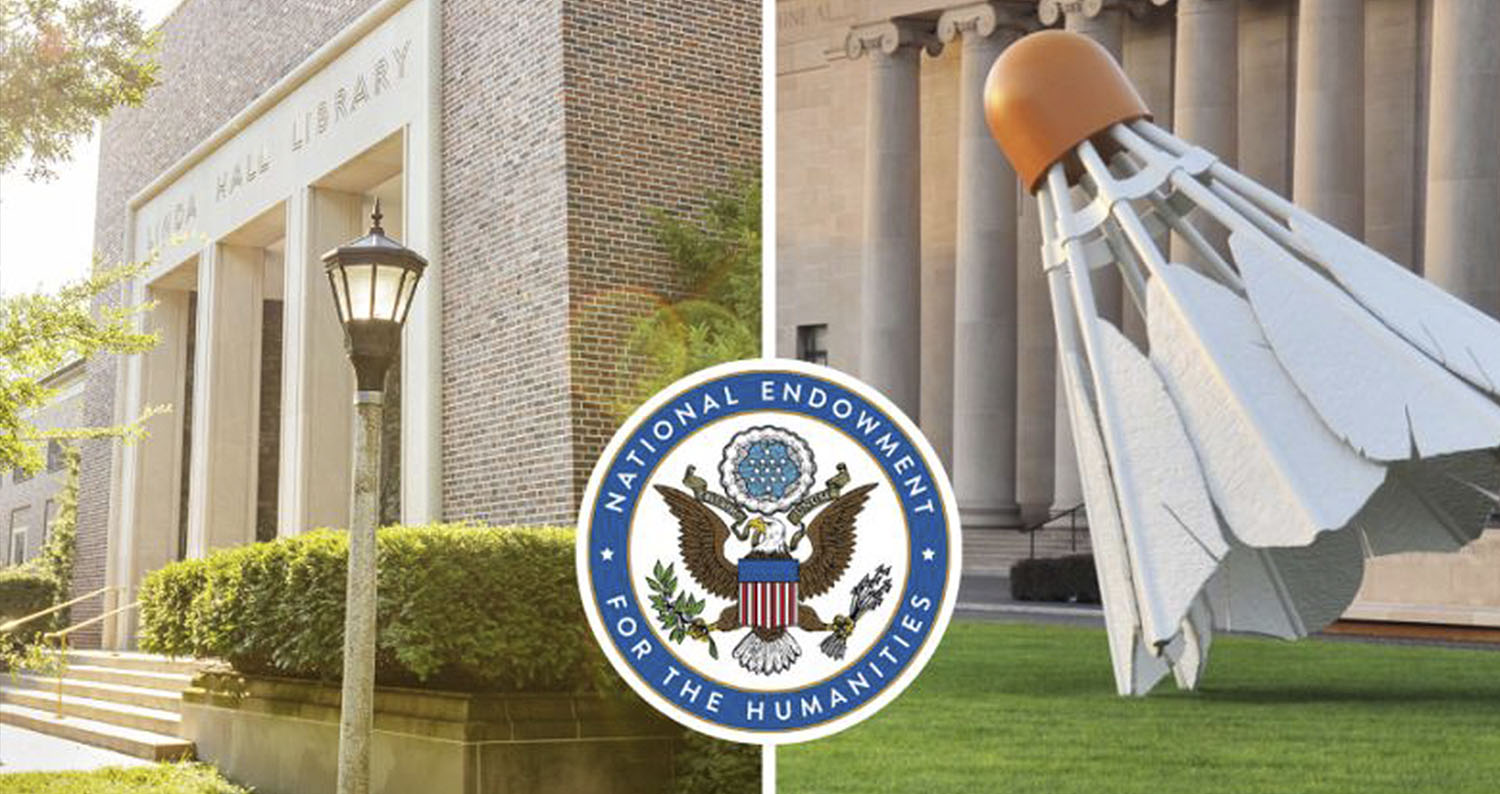
Through collaborative efforts with BNIM, The Nelson-Atkins Museum of Art and Linda Hall Library in Kansas City, MO, recently received a Climate Smart grant from the National Endowment for the Humanities (NEH). The NEH awards Climate Smart grants to help organizations reduce their impact on the environment through audits and risk assessments. We look forward to sharing more information on this process soon.
While high-performance sustainable design provides long-term operational savings, the initial first costs can sometimes be a barrier. At BNIM, we work closely with our clients to identify and leverage funding sources that can help make energy-efficient and sustainable solutions more financially viable upfront.
Our process starts with detailed financial modeling to analyze life cycle costs and payback periods for potential sustainability strategies. This allows us to quantify the long-term return on investment and make a financial case for implementing high-performance measures.
In 2023, we capitalized on opportunities such as the Inflation Reduction Act’s tax credits and incentives for energy efficiency upgrades, renewable energy systems, and electric vehicle charging infrastructure. We also assisted clients in securing sustainability grants and incentives from state, local, and federal governments, utility providers, and foundations to help offset capital expenditures. BNIM has experience utilizing creative financing mechanisms such as Property Assessed Clean Energy (PACE), which allows sustainability measures to be paid back over time through special assessment payments, eliminating the need for major upfront capital outlays.
By proactively exploring all available funding avenues through financial analysis, we enable investments in sustainability that make fiscal sense for our clients while aligning with their environmental stewardship goals. BNIM’s comprehensive approach maximizes the financial as well as ecological benefits of high-performance design.
Stay tuned for BNIM’s latest Subject To Change Sustainability Report — coming soon!

